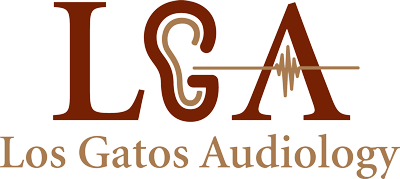Hearing loss is the third most common chronic health condition older adults experience in the U.S. Additionally, millions of children and young adults also navigate some degree of impaired hearing. According to the Centers for Disease Control and Prevention (CDC):
- 14.9% of children and young adults (ages 6 to 19) have some degree of hearing loss
- An estimated 16% of the population has hearing loss (around 52 million people)
These statistics further highlight the prevalence and scope of hearing loss which can significantly impact one’s daily life depending on the specific type, cause, and degree of impairment. There are two main types of hearing loss: sensorineural and conductive. Conductive hearing loss is less common and often temporary, impacting 10% of people with impaired hearing.
Causes
There are a variety of factors that contribute to the development of hearing loss including: existing medical conditions, genetic history, aging, and environmental exposure to loud noise. These factors can damage different parts of the auditory system which is the process of how we hear and consists of the:
- Outer Ear: is the most visible part of the ear (cartilage), the ear canal, and eardrum which separates the outer ear from the middle ear.
- Middle Ear: includes the ossicles, three tiny bones that are connected and the Eustachian tube.
- Inner ear: is composed of the cochlea which is filled with hair cells and fluid, in addition to nerve pathways that lead to the brain.
The outer ear absorbs sound from the environment which travels down the ear canal and lands on the eardrum. The vibration of the eardrum and ossicles push the soundwaves further into the inner ear which activates the cochlea. The movement of the hair cells and fluid in the cochlea help convert the soundwaves into electrical signals that the nerve pathways then send to the brain. This allows the brain to process and make meaning of the sound we hear. Damage to any of these critical components disrupts this system and causes hearing loss.
When the inner ear is impacted, this results in sensorineural hearing loss which accounts for 90% of all hearing loss. Damage to the middle and/or inner ear causes conductive hearing loss. Conductive hearing loss can be caused by the following:
- Buildup of earwax
- Ear infections
- Abnormal bone growths and tumors
- Injury or damage from foreign objects in the ear
- Narrowing of the ear canal
- Excess fluid caused by allergies or colds
Symptoms
The impact to the outer and/or middle ear prevents sound from traveling down the ear canal and being amplified by the eardrum and ossicles; restricting the soundwaves from reaching the inner ear. This makes it difficult to hear sounds that are at a normal or quiet volume level. Symptoms of conductive hearing loss include:
- Increasing the volume on electronic devices
- Difficulty hearing quiet sounds and speech
- Pressure or pain in one or both ears
- Distorted perception of voice (your own voice can seem different)
Unlike sensorineural hearing loss which is permanent, conductive hearing loss may be temporary depending on the cause.
Treatment
There are several ways to effectively treat hearing loss and, in some cases, conductive hearing loss can be cured by medical treatments and surgical options that can restore hearing. For example: excess fluid, wax buildup, tumors, injury caused by foreign objects, and abnormal bone growths can be addressed and healed by surgical procedures and antibiotics. These causes of conductive hearing loss often result in temporary hearing loss that can be cured. However, other causes of this type of hearing loss (narrowing of the ear canal, certain types of bone protrusions) are more complex and cannot be corrected through surgery. This results in permanent hearing loss which is most commonly treated by hearing aids. Hearing aids are small electronic devices that are designed to absorb, amplify, and process sound. They can be highly customized to meet specific hearing needs, drastically improving one’s ability to hear.
Treatment begins by getting your hearing evaluated. If you have experienced any of the symptoms described or have noticed changes with your hearing, schedule an appointment with us today!


